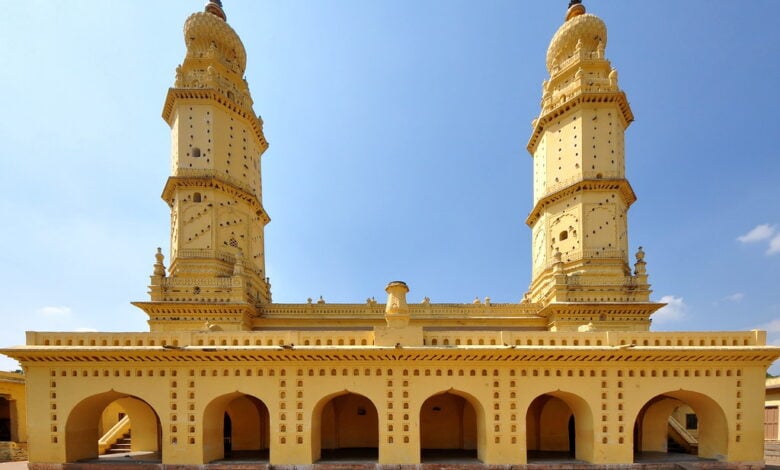
Amid the temple-mosque row that has erupted in the Srirangapatna town in Karnataka’s Mandya district, the Mysore Archaeological Department’s 1935 report has been brought to attention. As per reports, the archaeological department report stated that Tipu Sultan had demolished the Anjaneya Mandir and built Jamia Masjid after filling up the ground floor of the temple structure.
According to the reports, the then ruler of Mysore and Srirangapatna, Tipu Sultan demolished several temples to build mosques in the area. “Jumma Masjid was constructed by Tipu Sultan on top of the Anjaneya temple after filling up the latter’s ground floor,” Republic TV stated.
#BREAKING | Mysore Archeological Survey 1935 report accessed; demolition of Anjaneya Temple mentioned
Tune in – https://t.co/hBNv8QJ045 pic.twitter.com/X56fxQjs58
— Republic (@republic) June 4, 2022
Reportedly, an ASI letter published in 2004, which cited the Mysore Archaeological Department’s 1935 report also stated that the Madarsa operating in the current Jamia Masjid premises is illegal. The letter as accessed by the Republic TV noted that the Waqf board is running the Madarsa illegally in the Masjid premises since 1979.
1782 ರಲ್ಲಿ ಟಿಪ್ಪು ಸುಲ್ತಾನ ಅಧಿಕಾರಕ್ಕೆ ಬಂದ ನಂತರ ಮೈಸೂರು, ಮಂಗಳೂರು, ಮಡಿಕೇರಿ, ಮೇಲುಕೋಟೆ, ಮಲಬಾರ್ ಚಿತ್ರದುರ್ಗ, ಮುಂತಾದ ಕಡೆಗಳಲ್ಲಿ 8000 ಹಿಂದೂ ದೇವಸ್ಥಾನಗಳನ್ನು ಧ್ವಂಸ ಮಾಡಿ, ಬಹಳಷ್ಟು ಕಡೆ ಮಸೀದಿಗಳನ್ನು ನಿರ್ಮಾಣ ಮಾಡಿದನು
ಮಾನ್ಯ @BSBommai ರವರು ಧ್ವಂಸಗೊಂಡ ದೇವಸ್ಥಾನಗಳ ಪುನರುಜ್ಜೀವನ ಮಾಡಬೇಕೆಂಬುದು ಹಿಂದೂಗಳ ಬೇಡಿಕೆ pic.twitter.com/duLav31XeE
— 🚩Mohan gowda🇮🇳 (@Mohan_HJS) June 4, 2022
1520 ರಲ್ಲಿ ವ್ಯಾಸರಾಯತೀರ್ಥರು & ವಿಜಯನಗರ ಸಾಮೃಜ್ಯದ ಕೃಷ್ಣದೇವರಾಯರು ಆಂಜನೇಯ ದೇವಸ್ಥಾನವನ್ನು ಶ್ರೀರಂಗಪಟ್ಟಣದಲ್ಲಿ ನಿರ್ಮಾಣ ಮಾಡಿದರು.
ಆದರೆ ಮುರ್ತಿ ಭಂಜಕ ಟಿಪ್ಪು ಸುಲ್ತಾನನು 1782 ರಲ್ಲಿ ಈ ದೇವಸ್ಥಾನದ ಕೆಡವಿ, ಈ ಜಾಗದಲ್ಲಿ ಮಸೀದಿ ನಿರ್ಮಾಣ ಮಾಡಿದನು.
ಮಾನ್ಯ @ASIGoI ಕೂಡಲೇ ಅಲ್ಲಿ ನಮಾಜ್, ಮದರಸಾ ಬಂದ್ ಮಾಡಿ, ಸರ್ವೆ ಮಾಡಬೇಕು. pic.twitter.com/OoEoW0S4r3
— 🚩Mohan gowda🇮🇳 (@Mohan_HJS) June 4, 2022
Temple structure found under a mosque in Mangaluru.
In 1784 Tippu sultan Attacked on mangaluru region and demolished 27 churches and hundreds of Hindu Temples and built Masque on Temples premises.
We demand @ASIGoI to conduct survey masque place. Its an Temple @Tejasvi_Surya pic.twitter.com/Cma06xE1XZ
— 🚩Mohan gowda🇮🇳 (@Mohan_HJS) May 25, 2022
This is days after the members of the VHP and the Bajrang Dal organized the ‘Srirangapatna Chalo’ rally and gave a call to march toward the Jamia mosque in Srirangapatna to perform Hindu religious puja inside the Mosque. The Hindu organizations stated that the Jamia Mosque was built by Tipu Sultan in the year 1782 after demolishing a Hanuman temple.
On June 4, prohibitory orders under section 144 of the CrPC act were imposed in the Srirangapatna town in Karnataka’s Mandya district ahead of the ‘Srirangapatna Chalo’ rally. A heavy police force was deployed in the town and 4 check posts were installed in the area as a precautionary security measure ahead of the program.
Karnataka | Section 144 CrPC imposed in Srirangapatna town of Mandya district from 6 am to 6 pm today in wake of 'Srirangapatna Chalo' call given by VHP for today.
Over 500 police personnel deployed, 4 check posts installed. Route march taken out in the presence of SP N Yatish. pic.twitter.com/vBMXQ3GXpO
— ANI (@ANI) June 4, 2022
The Hindu organizations earlier on May 16 had stated that the Jamia Masjid in Karnataka’s Mandya was originally an Anjaneya temple. They had sought permission to worship the Anjaneya idol in the mosque and had also demanded the ASI investigate the matter. The activists had sought permission to take bath in a pond situated on the premises of the mosque.
Reportedly, the Hindu Janjagruti Samiti has demanded a survey also at the palace of Tipu Sultan in Bengaluru, claiming that it has been built on land encroached from a temple. Mohan Gowda, the spokesperson of the Hindu outfit said, “Several people in the past have said that behind the Tipu Sultan summer palace, it was all Kote Venkataramana Temple and this was illegally encroached by Sultan. There used to be a Sanskrit school here as well. This Hindu temple was illegally encroached upon and a survey must be carried out”.
Also, last week, a group named ‘Narendra Modi Vichar Manch’ (NMVM) approached the Mandya deputy commissioner and claimed that the Masjid-e-Ala was ‘Moodala Bagilu Anjaneya Swami temple’. It had requested the deputy commissioner of Mandya to allow them to perform prayers to Hanuman inside the said mosque.
The VHP meanwhile has claimed that a dargah in Basavakalyan in Karnataka’s Bidar district was a Basavanna temple. The members of the VHP have sought government intervention in the matter claiming that there is clear evidence that the dargah was historically a temple.
Source : OpIndia

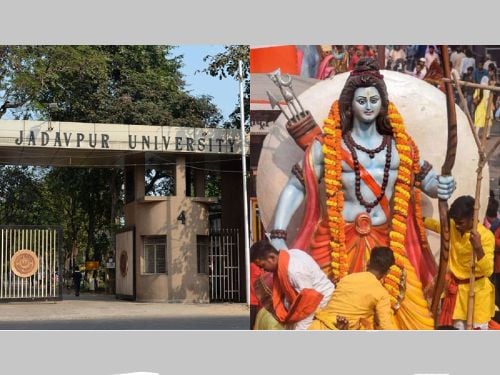 Jadavpur Univ revokes permission to celebrate Ram Navami on campus after granting it
Jadavpur Univ revokes permission to celebrate Ram Navami on campus after granting it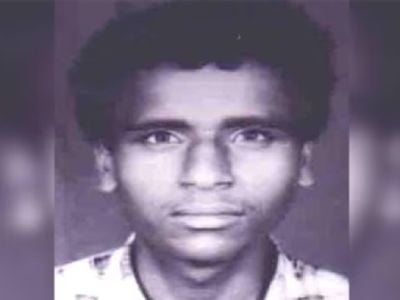 Chhattisgarh: Naxal top commander along with 28 other Naxals killed in a joint operation
Chhattisgarh: Naxal top commander along with 28 other Naxals killed in a joint operation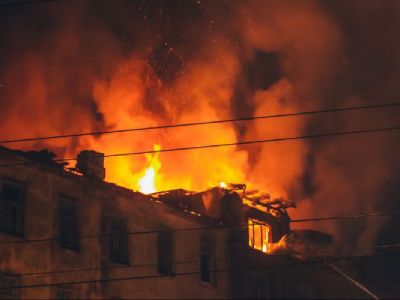 Andhra Pradesh: Farooq kills mentally challenged Hindu man for insurance money
Andhra Pradesh: Farooq kills mentally challenged Hindu man for insurance money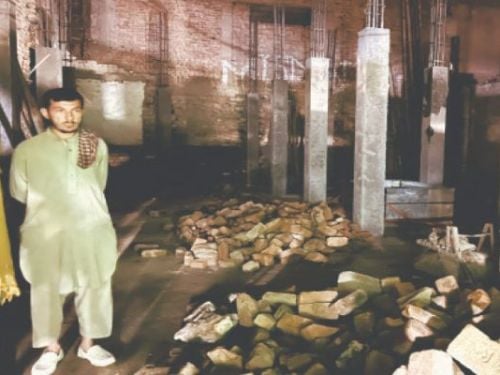 Pakistan: Ancient Hindu temple in Khyber Pakhtunkhwa demolished for commercial complex
Pakistan: Ancient Hindu temple in Khyber Pakhtunkhwa demolished for commercial complex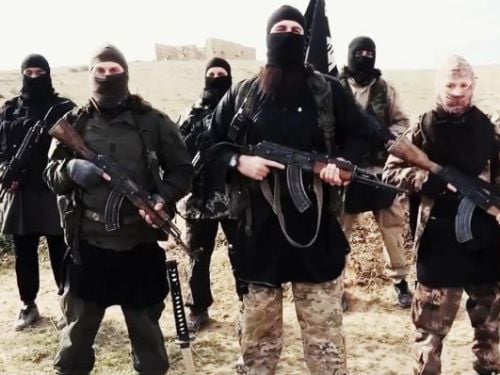 2 ISIS terrorists arrested in Germany for sexual abuse of minor Yazidi children
2 ISIS terrorists arrested in Germany for sexual abuse of minor Yazidi children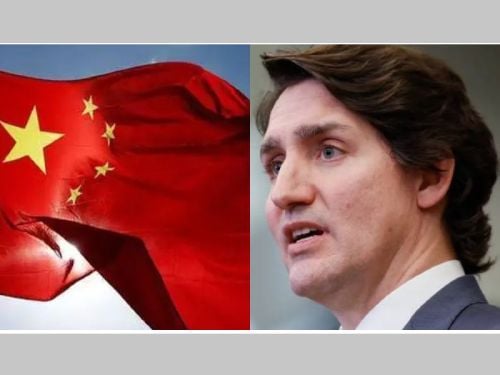 China, not India, interfered in 2019 and 2021 Canada elections, says Canadian panel
China, not India, interfered in 2019 and 2021 Canada elections, says Canadian panel